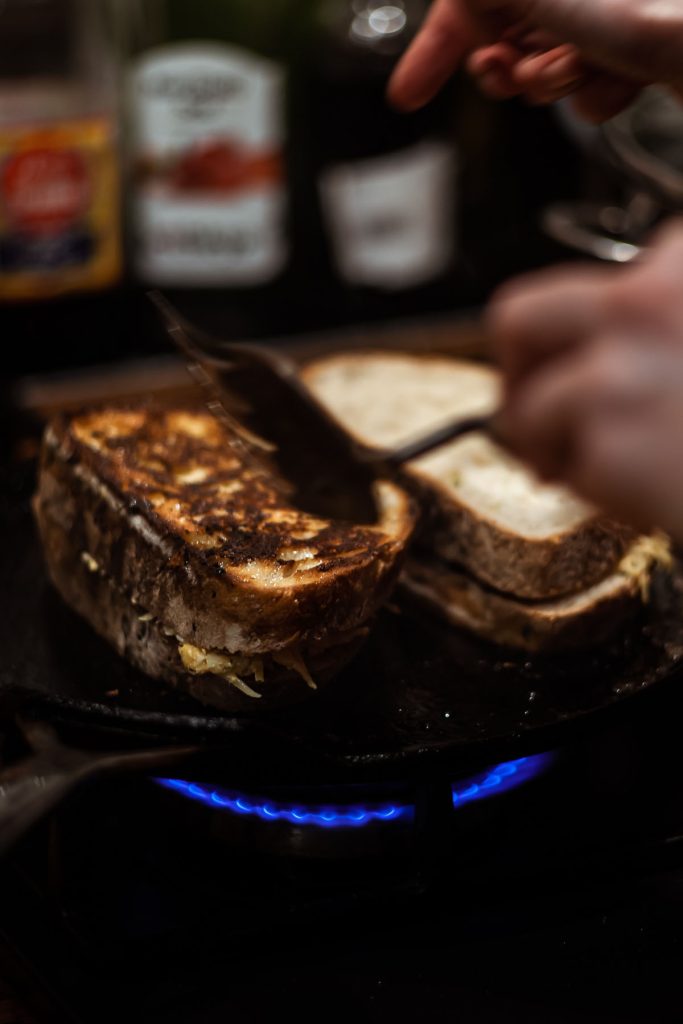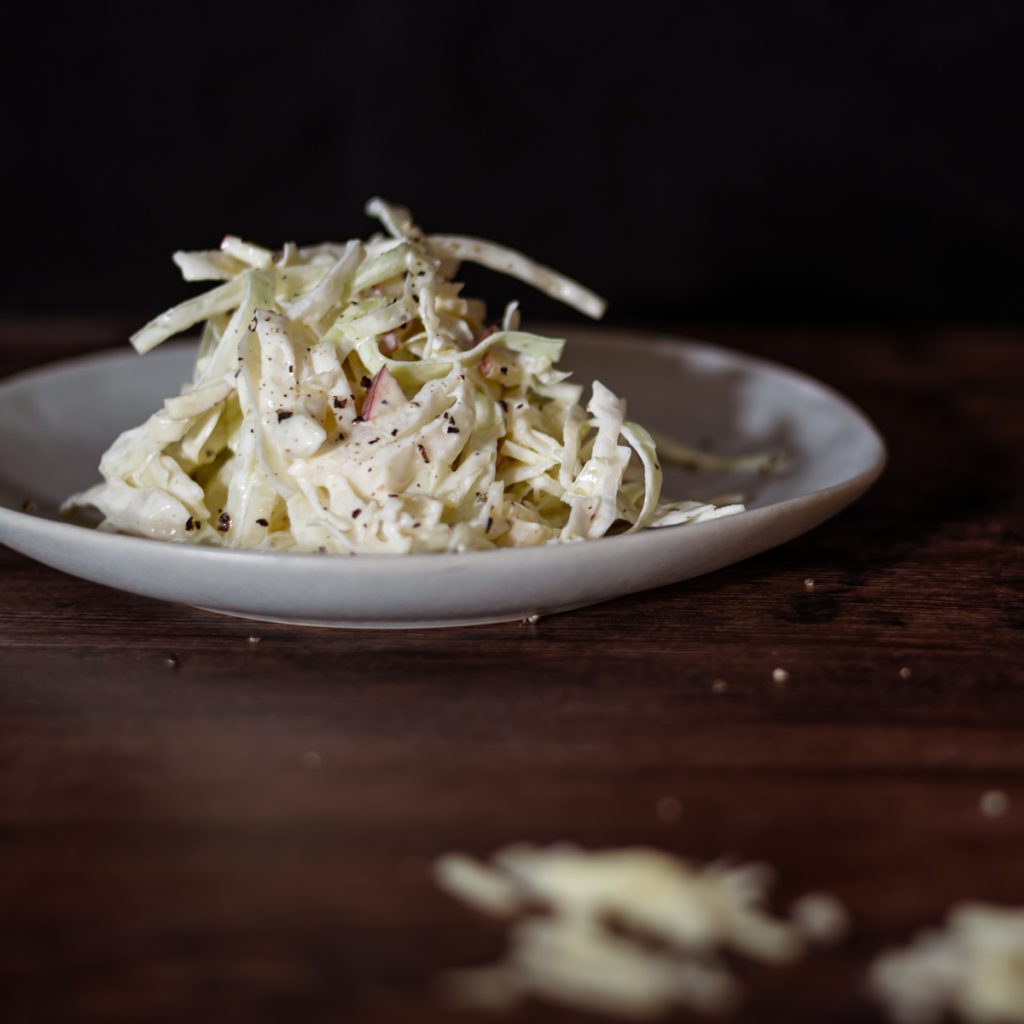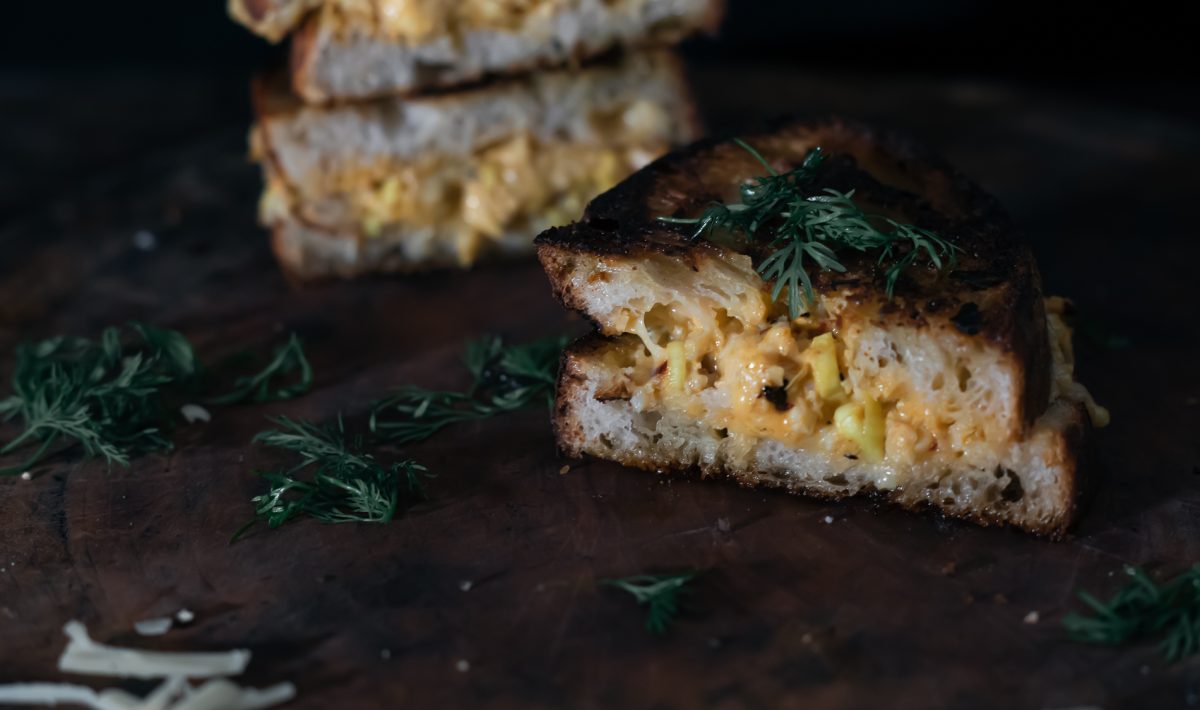Jospeh and I are a good match when it comes to Preserving the North Sea. He’s the writer who loves doing all the anthropologic research, taking pictures and contacting people. And I’m the planner, always on the hunt for that little fun fact and new recipes, cooking up a storm. Although we both have our specialty often they overlap and our backgrounds and culture merge into something unexpected. Just like this grilled North Sea cheese sandwich with crab.

A grilled cheese sandwich is somewhat the epitome of an American greasy snack and a childhood memory of Joseph.
After visiting the Thise dairy factory in Denmark and tasting all their different cheeses I quickly thought of making a grilled cheese North Sea version. The Thise North Sea cheese was an obvious choice. I’m happy to report that we nailed it on the first try: The smokey cheese, salty crab and crunchy sourdough bread… gooey heaven. We gave it a little extra by using homemade seaweed butter to bake the sandwich. (recipe to come!)
I paired it with a fresh coleslaw with some apple and sea buckthorn vinegar that we made during the same trip.

Grilled North Sea cheese with crab
Ingredients
Coleslaw
- ¼ white cabbage
- ½ apple
- 1 tbs mayonnaise
- 1 tbs sour cream or yogurt
- 3 tbs sea buckthorn vinegar or apple cideeer vinegar
- 1 tbs olive oil
- 1/2 lemon juiced
- salt and pepper tot taste
- sugar to taste
Grilled cheese sandwich
- 250 gram crab meat cooked
- 1 tbs mayonnaise
- 2 ts dijon mustard
- 1 ts paprika
- 1/2 ts chili flakes
- salt and pepper to taste
- 2 tbs green onions or leeks¼ cup minced. you can also use leeks
- 75 gram Gruyere shredded + a little extra
- 75 grm Thise North Sea cheese shredded
- 2-3 tbs butter (we uses seaweed butter)
- 4 slices light sourdough bread
Instructions
For the coleslaw
- Shred ¼ of white cabbage into thin slices.
- Finely dice the apple. You can leave the skin on.
- Mix the cabbage and apple with the rest of the ingredients and season to taste with salt, pepper and sugar.
- If you want a creamier coleslaw you can add more mayonnaise and/or yogurt.
For the grilled cheese sandwich
- Mix together the crab meat, mayonnaise, mustard, paprika, chili flakes, a bit of pepper, salt and the green onions. Mix it well, then taste, and adjust as you see fit.
- Mix the grated cheeses into the crab mixture until well combined.
- Cut 4 slices of bread of +/- 1,5 cm thick.
- Sprinkle two slices with a little grated cheese and top with half of the crab mixture. Sprinkle a little extra cheese and place the second slice of bread on top. Press gently to make it stick a bit.
- Melt 1,5 tbs of butter in a large skillet on medium heat. Add the sandwiches once melted and nice and hot. Cook one side until it is nice and crispy and golden.
- Take the sandwiches shortly out of the skillet and melt the rest of the butter. Now return the sandwiches to the pan with the already cooked side on top. Cook until the cheese is melted and the second side is golden brown. Make sure to keep the heat low so the bread doesn’t burn and you have enough time to melt the cheese.
- Remove the sandwiches from the pan, cut in half and serve with the coleslaw or a simple green salad.
Joseph’s Note on Sustainability.
Generally, crab is a more reliably sustainable option when it comes to seafood. As usual, this directly correlates to the method of capture; the most common way to catch a crab is with a trap. Traps are highly specific, which means they only catch the the targeted fishery. This also means there is much lower bycatch, which is one of the main contributors to overfishing. Also, traps have minimal impact on seafloor habitats and requires far less fuel than practices such as beam trawling.
The main concern with traps is quantity. Unfortunately, the EU still sets total allowable catches (TACs) higher than the recommendations of the marine biologists. Instead of taking the advice of those who would try to maintain healthy populations in the North Sea, the governmental policymakers continue to listen to lobbyists who prioritize profit over sustainability. What that means, for most fisheries around Europe, is that regulations allow for overfishing and therefore, many large-scale operations use overfishing as a business strategy.
Unfortunately, some large trawlers are also taking part in crab fishing. This means heavy beams and chains are dragged across the seabed. In this case, often times this results in damaged fish and shellfish. It is also the most damaging human practice in the fisheries.
It may not always be easy to find out where your crabs came from. (That sounded weird.) But it’s worth asking your fish monger. In the Northern parts of Europe, Shetland is the only crab fishery certified by the MSC. So if you see the label, that’s a great start. If not, look at the crab, it can tell you a lot. First, get a whole crab rather than claws, which may have been procured through bottom trawling; and second, make sure the crab is over 14 cm, which is the minimum landing size (smaller than that means the adolescent crab never had the chance to contribute to the population).





Recent Comments